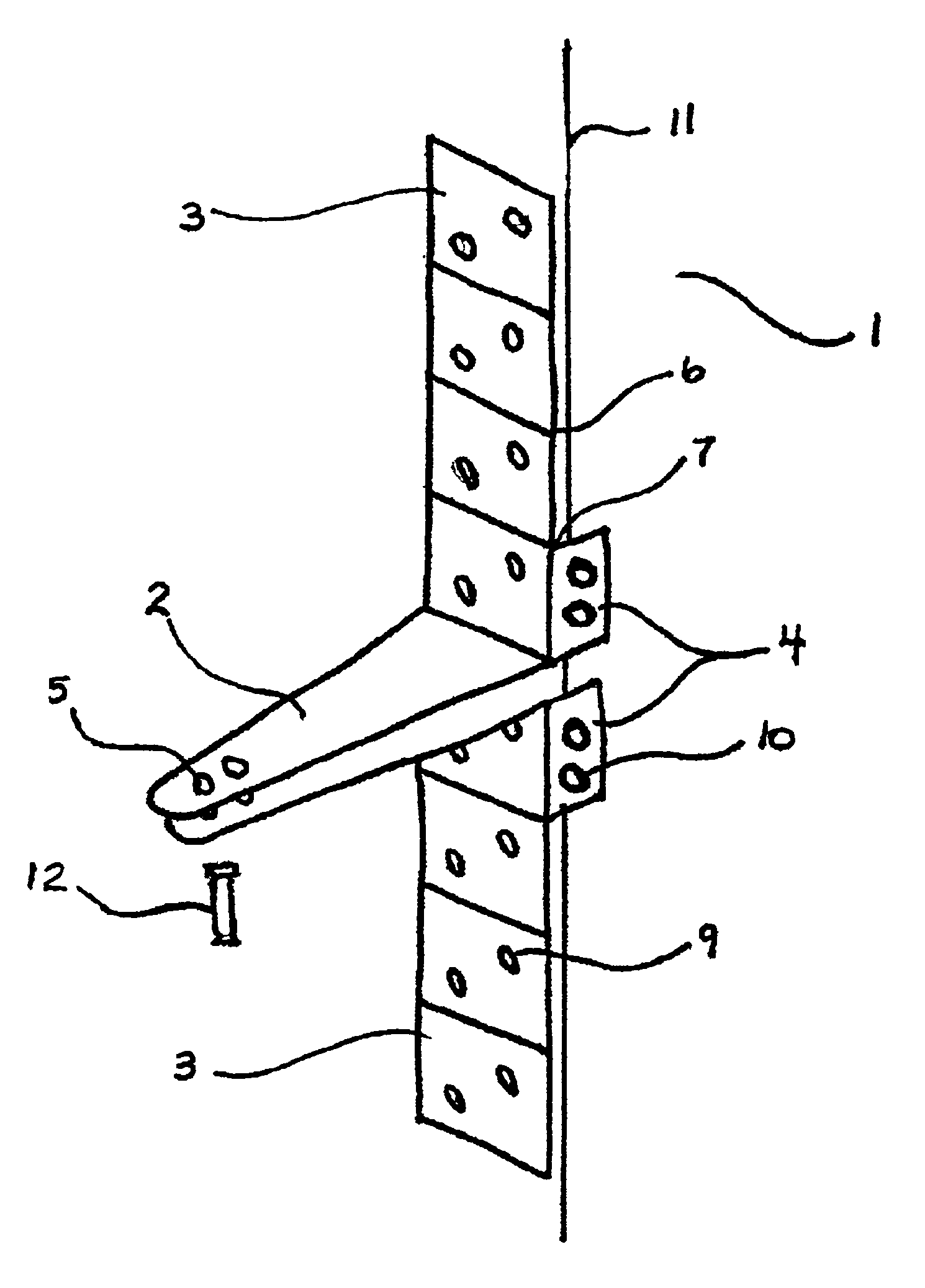Universal jamb bracket for a door closing system
a technology for door closing systems and jamb brackets, applied in hinges, wing accessories, manufacturing tools, etc., can solve the problems of reducing the effectiveness of door closers, affecting the safety of doors, and affecting the appearance of door closing jamb brackets, so as to achieve greater strength, reduce the thickness of metal at the barriers, and improve the stability.
- Summary
- Abstract
- Description
- Claims
- Application Information
AI Technical Summary
Benefits of technology
Problems solved by technology
Method used
Image
Examples
Embodiment Construction
[0027]FIG. 1 is a perspective view of the jamb bracket 1 used as part of a door closing system. Specifically, jamb bracket 1 secures the door closing system to doorjamb 11. Arm structure 2 extends outward from the center of the jamb bracket to meet the other elements of the door closing system. Arm structure 2 is 1-1 ¼″ wide and has a top and bottom portion. The width of arm structure 2 is decreased from that of the normal jamb bracket to allow for weather-stripping of varying thickness. Four pivot holes 5 are disposed at the end of the arm structure 2, two in each portion. The respective holes are aligned vertically and those on the same portion of arm structure 2 are separated from each other by ⅜″. Pivot fastener pin 12 of the door closing system is used to attach a piston rod to jamb bracket 1.
[0028]Basal element 3 extends perpendicularly above and below arm structure 2. Basal element 3 has a top and bottom portion. Basal element 3 lies flush against doorjamb 11 and is secured t...
PUM
 Login to View More
Login to View More Abstract
Description
Claims
Application Information
 Login to View More
Login to View More - R&D
- Intellectual Property
- Life Sciences
- Materials
- Tech Scout
- Unparalleled Data Quality
- Higher Quality Content
- 60% Fewer Hallucinations
Browse by: Latest US Patents, China's latest patents, Technical Efficacy Thesaurus, Application Domain, Technology Topic, Popular Technical Reports.
© 2025 PatSnap. All rights reserved.Legal|Privacy policy|Modern Slavery Act Transparency Statement|Sitemap|About US| Contact US: help@patsnap.com



